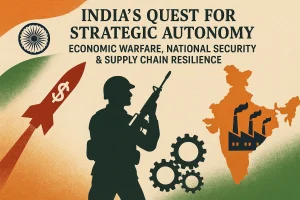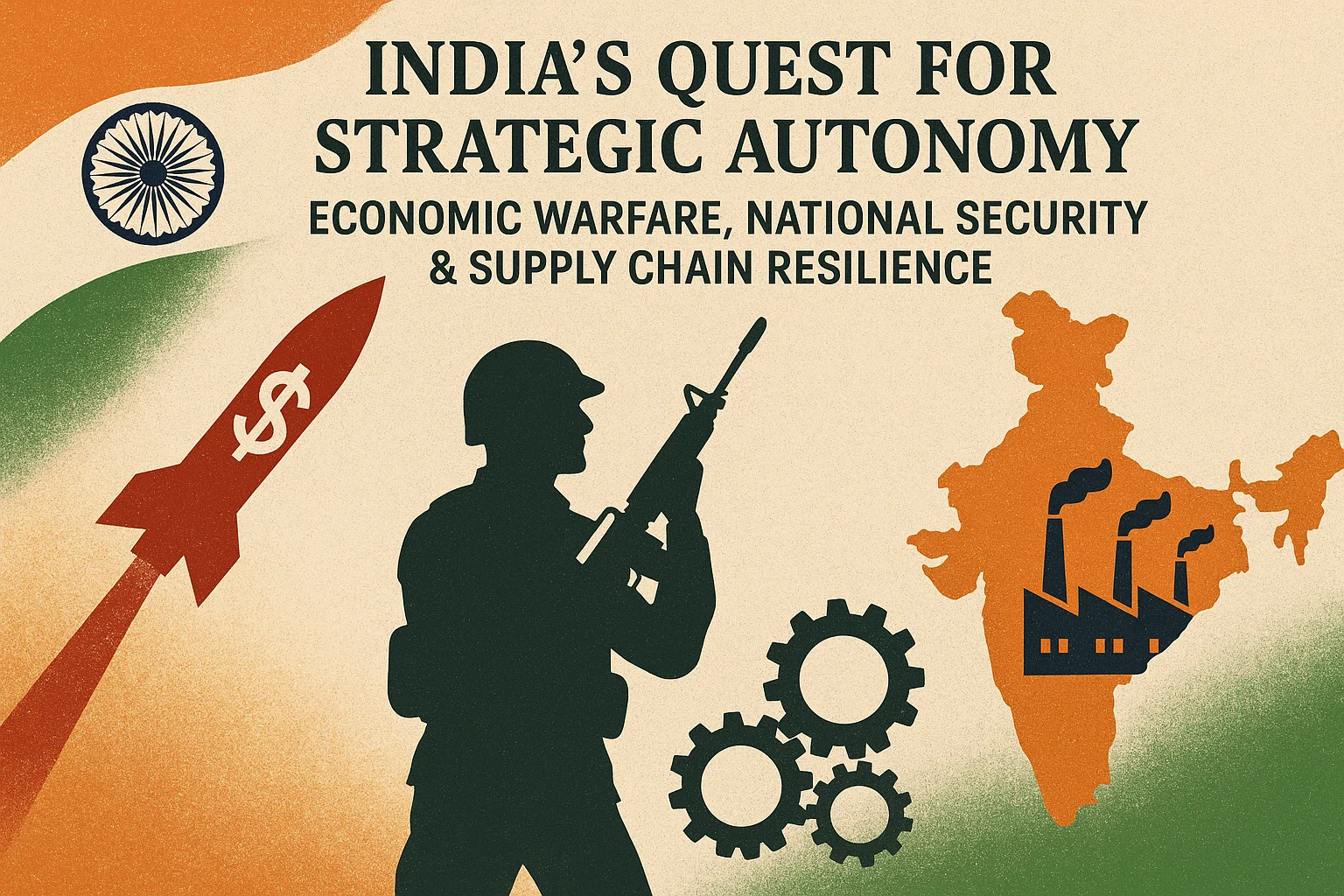China’s Dominance in the Indian Ocean
China is expanding its influence in the Indian Ocean through naval presence, infrastructure, and strategic partnerships, reshaping Indo-Pacific geopolitics. Learn about the IOR’s strategic significance, China’s motivations, the Malacca Dilemma, and India’s diplomatic, military, and regional measures to counter growing Chinese dominance.
China’s Strategic Rise in the Indian Ocean Region
The Indo-Pacific has become the central arena for 21st-century geopolitics, and China is at the forefront of shaping its dynamics. Diverging from the overt contestation in the Pacific, Beijing is playing a “long game” in the Indian Ocean, employing a sophisticated, three-pronged strategy to expand its strategic footprint, enhance its naval presence, and foster regional cooperation on its own terms.
What is the significance of the Indian Ocean Region (IOR)?
The Indian Ocean Region holds immense strategic and economic importance globally:
- Economic Artery: It is a critical maritime highway facilitating about 80% of the world’s seaborne oil trade and a significant portion of global commercial shipping. Major Sea Lanes of Communication (SLOCs) like the Straits of Malacca, Hormuz, and Bab-el-Mandeb are its choke points.
- Energy Security: The IOR is bordered by energy-rich nations in the Middle East and Africa, making it the primary route for global energy supplies, particularly to Asian economies like China and India.
- Strategic Dominance: Control or influence over the IOR allows a nation to project power, protect its trade routes, and monitor the activities of rivals. It is often termed the “battlefield of the 21st century” due to its central role in the strategic competition between major powers.
- Maritime Resources: The region is rich in living and non-living resources, including fisheries and potential seabed minerals, making the “blue economy” a key interest for littoral states.
Why does China want passage and access to the Indian Ocean Region (IOR)?
China’s interests in the IOR are driven by a combination of compelling domestic needs and external ambitions:
- Securing Energy Lifelines (Domestic Interest): China is the world’s largest importer of oil, and approximately 80% of its crude oil imports transit through the Indian Ocean via the Strait of Malacca. Securing these energy SLOCs is a matter of national energy security and economic stability.
- Mitigating the “Malacca Dilemma”: This refers to China’s strategic vulnerability where any blockade or disruption at the Strait of Malacca could cripple its economy. A sustained presence in the IOR helps China diversify risk and protect its supply chains.
- Projecting Global Power (External Interest): As China seeks to transition from a regional to a global power, a permanent and influential presence in the IOR is essential. It allows Beijing to counter the influence of the US, India, and other powers, and assert itself as a key shaper of the regional order.
- Expanding Strategic Depth: The IOR provides China with strategic space beyond the Western Pacific, where it is contained by the US alliance network (like Japan, South Korea, and the Philippines). Dominance in the IOR would encircle India and break out of this containment.

What measures have been taken by India to curb Chinese influence in the region?
In response to China’s inroads, India has adopted a multi-faceted strategy focusing on diplomacy, military posture, and regional initiatives:
-
Diplomacy and Partnerships:
-
-
- Act East Policy: Strengthening strategic and economic ties with Southeast Asian countries and key IOR littoral states like Vietnam, Singapore, and Indonesia.
- Quadrilateral Security Dialogue (Quad): Partnering with the US, Japan, and Australia to ensure a free and open Indo-Pacific, providing a strategic counterweight to China.
- Infrastructure Development: Assisting neighbours like Bangladesh, Sri Lanka, and the Maldives with development projects and lines of credit as an alternative to Chinese financing (e.g., the Greater Male Connectivity Project in Maldives).
-
-
Military and Security Enhancements:
-
-
- Military Modernisation: Enhancing naval capabilities with new submarines, aircraft carriers, and warships to maintain dominance in its primary area of interest.
- Andaman and Nicobar Command: Strategically developing these islands into a major tri-service command to monitor and control the chokepoint at the Strait of Malacca.
- Security and Capacity Building: Conducting joint military exercises (e.g., MALABAR with US and Japan) and providing maritime surveillance and security assistance to IOR nations.
-
-
Regional Initiatives:
-
- SAGAR (Security and Growth for All in the Region): India’s flagship policy for the IOR, emphasising cooperative security, sustainable development, and a transparent, non-predatory approach.
- Indian Ocean Rim Association (IORA): Playing a leading role in IORA to foster regional cooperation on maritime safety, security, and the blue economy.
Subscribe to our Youtube Channel for more Valuable Content – TheStudyias
Download the App to Subscribe to our Courses – Thestudyias
The Source’s Authority and Ownership of the Article is Claimed By THE STUDY IAS BY MANIKANT SINGH



